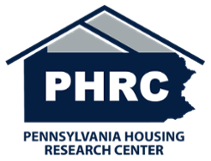
New Online Workshop - Residential Moisture Management: The 4D's
The PHRC is launching a new live online webinar series in May 2017! This series will take place over four consecutive weeks on Thursday from 1:00-2:30PM, May 4, 11, 18, and 25.
- Registration = $100 (includes all 4 webinars)
- This series is eligible for a total of 6.0 L&I Contact Hour, 6.0 PDH, 6.0 AIA LU|HSW, 6.0 ICC Contact Hour (0.6 CEU), and 6.0 NARI hour/CEU
- Attendees must be logged into each session for the full 90 minutes to receive credit for that session
- Credit is only given for the sessions attended
- If a session is missed, the recording will be available to view but credit will not be available
- Certificates will be emailed to all those confirmed as participants after each session is completed
Registration is open until April 28 at the following link:
http://www.cvent.com/d/v5qlp5/4W
Below are the descriptions and learning objectives for each of the four sessions:
Part 1 (May 4): Deflection
The performance of the building enclosure in the modern construction industry is critical to the success of a project. Much of this performance has to do with managing moisture in various forms. Moisture management can be accomplished using four distinct approaches: Deflection, Drainage, Drying, and Durability. This session will take a deeper look at the principle of deflection through passive architectural components such as overhangs, drip edge profiles, and gutter systems.
Learning Objectives
- Identify the enclosure features that help to deflect bulk water away from building assemblies in order to prevent moisture intrusion.
- Discuss the impact that simple roof overhangs can have on the performance of exterior wall systems during rain and snow events.
- Analyze simple drip edge profiles and the role they can play in directing moisture away from walls to prevent moisture damage at penetrations.
- Examine the components of a properly designed and installed gutter and downspout system and the effect it has in preventing moisture intrusion in a home.
Part 2 (May 11): Drainage
The performance of the building enclosure in the modern construction industry is critical to the success of a project. Much of this performance has to do with managing moisture in various forms. Moisture management can be accomplished using four distinct approaches: Deflection, Drainage, Drying, and Durability. This session will look at the strategies for handling moisture that comes in contact with exterior wall assemblies in order to reduce the likelihood of moisture-related damage in a home.
Learning Objectives
- Analyze the components in the enclosure systems that aid in draining intruding moisture down vertical surfaces and ultimately away from the overall enclosure.
- Discuss various material options and overall constructability for installing a code-required water-resistive barrier in an exterior wall system.
- Examine common fenestration flashing techniques and their intent regarding the prevention of moisture from damaging rough openings in framed walls.
- Explore above-code options for draining moisture from wall systems, such as rainscreen gaps and systems, and their impact on the overall cost of a project.
Part 3 (May 18): Drying
The performance of the building enclosure in the modern construction industry is critical to the success of a project. Much of this performance has to do with managing moisture in various forms. Moisture management can be accomplished using four distinct approaches: Deflection, Drainage, Drying, and Durability. This session will dive into the fundamentals of moisture movement through wall systems and the conditions necessary to dry intruding moisture from exterior wall systems.
Learning Objectives
- Discuss the concepts behind drying potential in order to prevent material and system degradation, mold growth, and occupant comfort issues.
- Analyze the concepts of condensation and dew point and discuss the common areas in the building enclosure where this may result in degradation of building components.
- Identify common vapor retarders and vapor barriers, their basic code requirements, and the role they play in preventing moisture accumulation in enclosure systems.
- Examine various scenarios where drying potential may direct the design and decision making process in order to deliver a durable and high-performing enclosure system.
Part 4 (May 25): Durability
The performance of the building enclosure in the modern construction industry is critical to the success of a project. Much of this performance has to do with managing moisture in various forms. Moisture management can be accomplished using four distinct approaches: Deflection, Drainage, Drying, and Durability. This session will focus on the overall concept of durability and the role that proper design can play in the longevity of the built environment.
Learning Objectives
- Examine the role that material selection has on the overall durability of the building enclosure and the impact this durability has on the sustainability of the building.
- Discuss the concept of material and system longevity and the impact it has on up-front and operating costs in a home.
- Identify the appropriate life expectancy of various building materials and the role this knowledge may have in the design of various enclosure systems.
- Analyze moisture tolerance requirements of common enclosure systems and the impact these materials may have on the performance and overall cost of construction.



